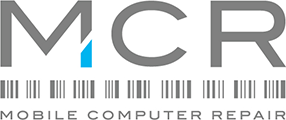Given how straightforward a process it might seem to use a barcode scanner, it may seem odd to suggest that much would ever actually go wrong with that process. But it can, and it does!
Ultimately, if you are using a barcode scanner as part of your organisation’s operations, and the actual scanning doesn’t seem to be working, the reason is likely to be something to do with the scanner not being the right match to the barcodes, a failure to operate the barcode scanner properly, or there being some issue with the actual barcode or scanner.
So, let’s cycle through some of the specific issues that may arise, and that might be preventing you from scanning barcodes with your device.
The Scanner Is Incompatible with The Barcodes
Not all barcode scanners will work with all barcodes. A classic problem is when the user is attempting to scan 2D barcodes, for instance, and the device they’re using is only capable of scanning linear (1D) barcodes.
If you investigate this and you discover that the model of barcode scanner should theoretically work just fine with the barcodes you’re trying to scan, the next obvious step is to check the settings of the barcode scanner. Auto-discrimination, for instance, is a feature that typically detects the given barcode’s language, and if it isn’t enabled on your scanner, you might consider enabling it.
You’re Trying to Scan at The Wrong Angle or Distance
If the scanner you’re using would seem to be compatible with the given barcodes and appropriately set up for them, your next ‘troubleshooting’ step – as silly as it might sound – should probably be to make sure your scanning ‘technique’ is right.
By that, we are referring to both angle and distance. Angles can be troublesome when the barcode has been printed on a glossy surface, for example, given that light can reflect off the barcode and interfere with the scanner’s ability to detect the vital contrast between the barcode’s lines and spaces.
As for distance, every scanner has a particular read range or depth of field. Read ranges will also vary depending on the sizes of the barcodes that are to be read.
The Barcode Label Has Been Poorly Placed
Sometimes, the difficulty you’re having with barcode scanning really can be this simple. If, for instance, the barcode has been wrapped around a narrow tube, you will have a hard task on your hands to read all of the lines of the barcode with the scanner.
If this is a problem that you have kept on encountering at your organisation with your barcode labelling, it’s a good idea to have standard, formalised procedures in place for ensuring you have the right types of labels and barcodes on the given items, and to make sure the labels are applied to the products appropriately for scanning.
The Barcode Has Been Damaged
There are a lot of ways in which something as delicate as a barcode label can be rendered unreadable through damage, particularly in environments where the barcode might be subject to extreme temperatures or even chemical exposure.
Even just something as simple as smudging or fading on the label can result in problems when you then attempt to scan the barcode. This is before we even consider the chances of scratches or tears to the label.
It’s why you should always try to ensure the barcode labels used within your organisation are ones that can stand up to the potentially harsh environments in which they might be used.
There Is Something Defective with The Barcode Scanner
While it is important to consult the various support guides available for your given barcode scanner to rule out other potential causes of scanning problems – such as the device having not been suitably programmed – there is, of course, also the chance of the scanner simply being malfunctional.
If this seems like a probable reason for your struggle to scan barcodes, you are welcome to reach out to our specialists in scanner repairs in the UK here at Mobile Computer Repair.
Whether you have a Honeywell, Symbol, Bluebird, Zebra or Motorola barcode scanner – to cite just some of the brands whose devices we fix – we can give you the benefit of the most comprehensive, cost-effective and efficient repair service.

